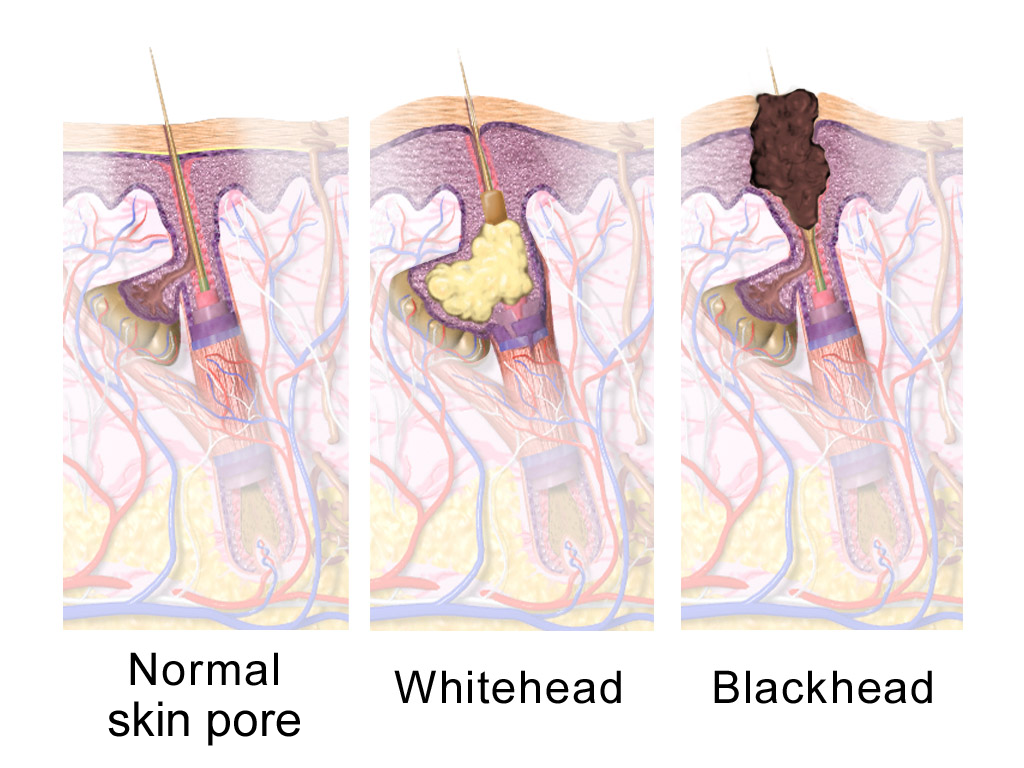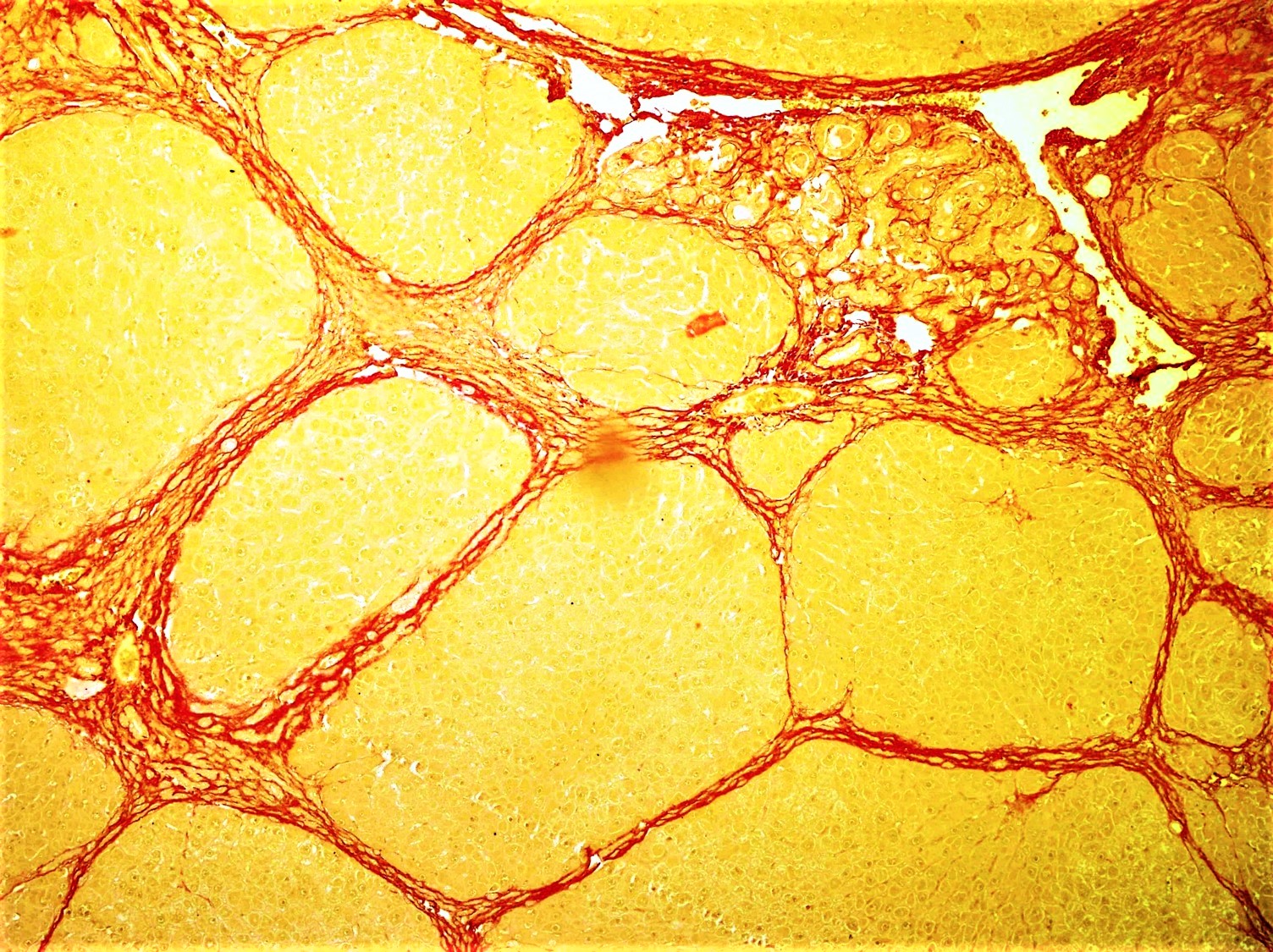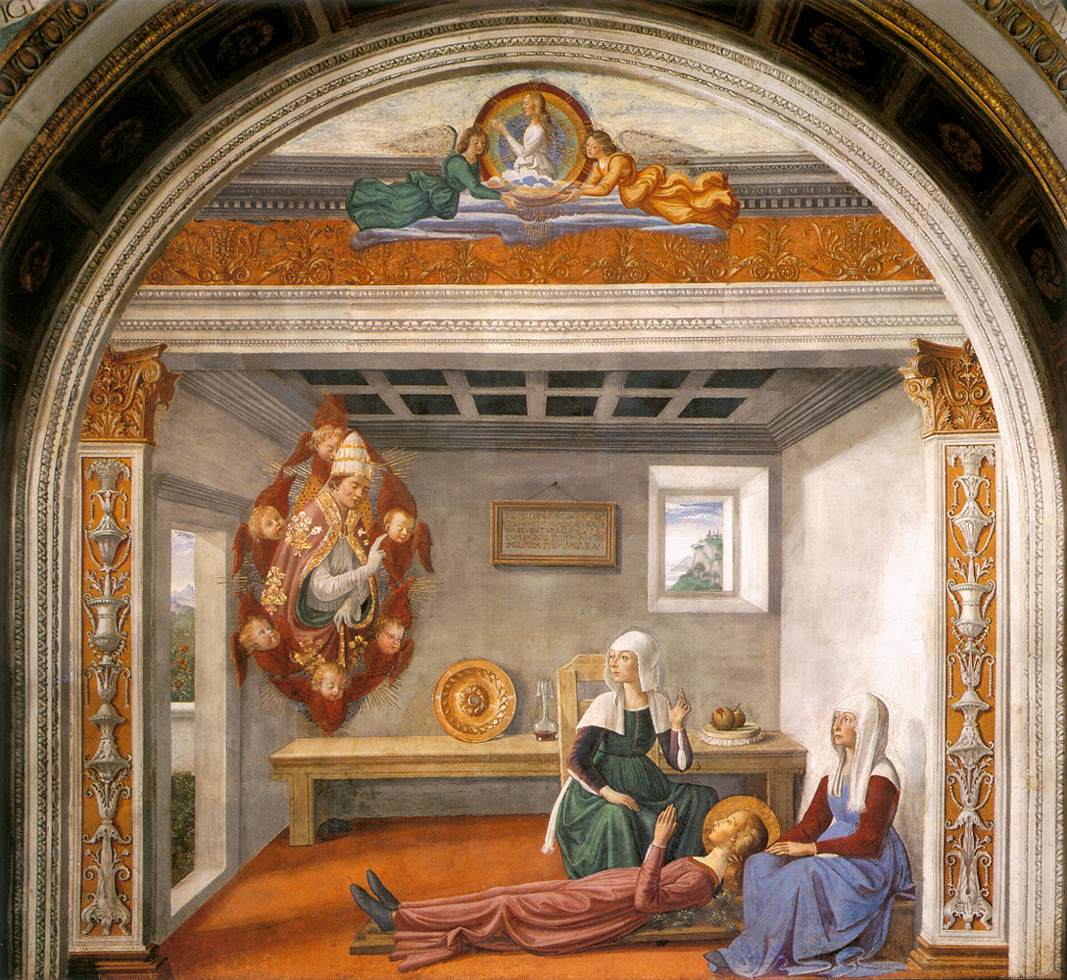|
Rhinophyma
Rhinophyma is a condition causing development of a large, bulbous nose associated with granulomatous infiltration, commonly due to untreated rosacea. The condition is most common in older white males. Colloquial terms for the rhinophyma include "whiskey nose", "gin blossom", "toros nose", and "potato nose". Signs and symptoms Rhinophyma is characterised by prominent pores and a fibrous thickening of the nose, sometimes with papules. It is associated with the common skin condition rosacea and it can be classified clinically into 5 grades of increasing severity. Complications Tissue thickening may come to cause airway obstruction and impede breathing. Rhinophyma can cause psychological distress due to its effect on one's personal appearance, as well as social perception of a link with alcoholism. Causes Rhinophyma develops in certain individuals with an unknown predisposition from long-standing rosacea which has progressed to a severe form. Although rhinophyma has been com ... [...More Info...] [...Related Items...] OR: [Wikipedia] [Google] [Baidu] |
Rosacea
Rosacea is a long-term skin condition that typically affects the face. It results in redness, pimples, swelling, and small and superficial dilated blood vessels. Often, the nose, cheeks, forehead, and chin are most involved. A red, enlarged nose may occur in severe disease, a condition known as rhinophyma. The cause of rosacea is unknown. Risk factors are believed to include a family history of the condition. Factors that may potentially worsen the condition include heat, exercise, sunlight, cold, spicy food, alcohol, menopause, psychological stress, or steroid cream on the face. Diagnosis is based on symptoms. While not curable, treatment usually improves symptoms. Treatment is typically with metronidazole, doxycycline, minocycline, or tetracycline. When the eyes are affected, azithromycin eye drops may help. Other treatments with tentative benefit include brimonidine cream, ivermectin cream, and isotretinoin. Dermabrasion or laser surgery may also be used. ... [...More Info...] [...Related Items...] OR: [Wikipedia] [Google] [Baidu] |
Sebaceous Gland
A sebaceous gland or oil gland is a microscopic exocrine gland in the skin that opens into a hair follicle to secrete an oily or waxy matter, called sebum, which lubricates the hair and skin of mammals. In humans, sebaceous glands occur in the greatest number on the face and scalp, but also on all parts of the skin except the palms of the hands and soles of the feet. In the eyelids, meibomian glands, also called tarsal glands, are a type of sebaceous gland that secrete a special type of sebum into tears. Surrounding the female nipples, areolar glands are specialized sebaceous glands for lubricating the nipples. Fordyce spots are benign, visible, sebaceous glands found usually on the lips, gums and inner cheeks, and genitals. Structure Location In humans, sebaceous glands are found throughout all areas of the skin, except the palms of the hands and soles of the feet. There are two types of sebaceous glands: those connected to hair follicles and those that ex ... [...More Info...] [...Related Items...] OR: [Wikipedia] [Google] [Baidu] |
Snow White And The Seven Dwarfs (1937 Film)
''Snow White and the Seven Dwarfs'' is a 1937 American animated musical fantasy film Fantasy films are films that belong to the fantasy genre with fantastic themes, usually Magic (paranormal), magic, supernatural events, mythology, folklore, or exotic fantasy worlds. The Film genre, genre is considered a form of speculative fic ... produced by Walt Disney Productions and released by RKO Radio Pictures. Based on the Snow White, 1812 German fairy tale by the Brothers Grimm, the production was supervised by David Hand (animator), David Hand, and was directed by five sequence directors, Perce Pearce, William Cottrell, Larry Morey, Wilfred Jackson, and Ben Sharpsteen. It is the first animated feature film produced in the United States and the first Traditional animation, cel animated feature film. ''Snow White'' premiered at the Carthay Circle Theatre in Los Angeles, California, on December 21, 1937, and went into general release in the United States on February 4, 1938. Despite ... [...More Info...] [...Related Items...] OR: [Wikipedia] [Google] [Baidu] |
Androgenic
An androgen (from Greek ''andr-'', the stem of the word meaning ) is any natural or synthetic steroid hormone that regulates the development and maintenance of male characteristics in vertebrates by binding to androgen receptors. This includes the embryological development of the primary male sex organs, and the development of male secondary sex characteristics at puberty. Androgens are synthesized in the testes, the ovaries, and the adrenal glands. Androgens increase in both males and females during puberty. The major androgen in males is testosterone. Dihydrotestosterone (DHT) and androstenedione are of equal importance in male development. DHT ''in utero'' causes differentiation of the penis, scrotum and prostate. In adulthood, DHT contributes to balding, prostate growth, and sebaceous gland activity. Although androgens are commonly thought of only as male sex hormones, females also have them, but at lower levels: they function in libido and sexual arousal. Androgens are t ... [...More Info...] [...Related Items...] OR: [Wikipedia] [Google] [Baidu] |
Epithelialise
Wound healing refers to a living organism's replacement of destroyed or damaged tissue by newly produced tissue. In undamaged skin, the epidermis (surface, epithelial layer) and dermis (deeper, connective layer) form a protective barrier against the external environment. When the barrier is broken, a regulated sequence of biochemical events is set into motion to repair the damage. This process is divided into predictable phases: blood clotting (hemostasis), inflammation, tissue growth (cell proliferation), and tissue remodeling (maturation and cell differentiation). Blood clotting may be considered to be part of the inflammation stage instead of a separate stage. The wound-healing process is not only complex but fragile, and it is susceptible to interruption or failure leading to the formation of non-healing chronic wounds. Factors that contribute to non-healing chronic wounds are diabetes, venous or arterial disease, infection, and metabolic deficiencies of old age.Enoch, S. ... [...More Info...] [...Related Items...] OR: [Wikipedia] [Google] [Baidu] |
Carbon Dioxide Laser
The carbon-dioxide laser (CO2 laser) was one of the earliest gas lasers to be developed. It was invented by C. Kumar N. Patel, Kumar Patel of Bell Labs in 1964 and is still one of the most useful types of laser. Carbon dioxide, Carbon-dioxide lasers are the highest-power continuous-wave lasers that are currently available. They are also quite efficient: the ratio of output power to Laser pumping, pump power can be as large as 20%. The CO2 laser produces a beam of infrared light with the principal wavelength bands centering on 9.6 and 10.6 Micrometre, micrometers (μm). Amplification The active laser medium (laser gain/Amplifier, amplification medium) is a gas discharge which is air- or water-cooled, depending on the power being applied. The filling gas within a sealed discharge tube consists of around 10–20% carbon dioxide (), around 10–20% nitrogen (), a few percent hydrogen () and/or xenon (Xe), with the remainder being helium (He). A different mixture is used in a ''fl ... [...More Info...] [...Related Items...] OR: [Wikipedia] [Google] [Baidu] |
Gould Pyle 200
Gould may refer to: People * Gould (name), a surname Places United States * Gould, Arkansas, a city * Gould, Colorado, an unincorporated community * Gould, Ohio, an unincorporated community * Gould, Oklahoma, a town * Gould, West Virginia, an unincorporated community * Gould City, Michigan * Gould City, Washington * Gould Township, Minnesota Multiple countries * Gould Lake (other) * Mount Gould (other) Elsewhere * Gould (crater), a lunar crater formation * Gould Coast, Antarctica * Gould Dome, Alberta, Canada Other uses * Gould baronets, two titles, one in the Baronetage of England and one in the Baronetage of Great Britain * Gould Belt, a partial ring of stars in the Milky Way * Gould designation, a type of star identifier * Gould League, an independent Australian organisation promoting environmental education * Gould Electronics, a company involved in the electronics and semiconductor industries * Gould Racing, a British motorsport company * USC Goul ... [...More Info...] [...Related Items...] OR: [Wikipedia] [Google] [Baidu] |
Hypertrophy
Hypertrophy is the increase in the volume of an organ or tissue due to the enlargement of its component cells. It is distinguished from hyperplasia, in which the cells remain approximately the same size but increase in number. Although hypertrophy and hyperplasia are two distinct processes, they frequently occur together, such as in the case of the hormonally induced proliferation and enlargement of the cells of the uterus during pregnancy. Eccentric hypertrophy is a type of hypertrophy where the walls and chamber of a hollow organ undergo growth in which the overall size and volume are enlarged. It is applied especially to the left ventricle of heart. Sarcomeres are added in series, as for example in dilated cardiomyopathy (in contrast to hypertrophic cardiomyopathy, a type of concentric hypertrophy, where sarcomeres are added in parallel). Gallery Gould Pyle 234.jpg, Breasts Hypertrophied clitoris.jpg, Clitoris Head of a boy with hypertrophy of the ear Wellcome L0062496.j ... [...More Info...] [...Related Items...] OR: [Wikipedia] [Google] [Baidu] |
Hyperplasia
Hyperplasia (from ancient Greek ὑπέρ ''huper'' 'over' + πλάσις ''plasis'' 'formation'), or hypergenesis, is an enlargement of an organ or tissue caused by an increase in the amount of Tissue (biology), organic tissue that results from cell proliferation. It may lead to the Gross anatomy, gross enlargement of an organ, and the term is sometimes confused with benign neoplasia or benign tumor. Hyperplasia is a common preneoplastic response to stimulus. Microscopically, cells resemble normal cells but are increased in numbers. Sometimes cells may also be increased in size (hypertrophy). Hyperplasia is different from hypertrophy in that the Cellular adaptation, adaptive cell change in hypertrophy is an increase in the cell size, ''size'' of cells, whereas hyperplasia involves an increase in the ''number'' of cells. Causes Hyperplasia may be due to any number of causes, including proliferation of basal layer of epidermis to compensate skin loss, Chronic inflammation, chr ... [...More Info...] [...Related Items...] OR: [Wikipedia] [Google] [Baidu] |
Fibrosis
Fibrosis, also known as fibrotic scarring, is the development of fibrous connective tissue in response to an injury. Fibrosis can be a normal connective tissue deposition or excessive tissue deposition caused by a disease. Repeated injuries, chronic inflammation and repair are susceptible to fibrosis, where an accidental excessive accumulation of extracellular matrix components, such as the collagen, is produced by fibroblasts, leading to the formation of a permanent fibrotic scar. In response to injury, this is called scarring, and if fibrosis arises from a single cell line, this is called a fibroma. Physiologically, fibrosis acts to deposit connective tissue, which can interfere with or totally inhibit the normal architecture and function of the underlying organ or tissue. Fibrosis can be used to describe the pathological state of excess deposition of fibrous tissue, as well as the process of connective tissue deposition in healing. Defined by the pathological accumulation of ... [...More Info...] [...Related Items...] OR: [Wikipedia] [Google] [Baidu] |
Domenico Ghirlandaio
Domenico di Tommaso Curradi di Doffo Bigordi (2 June 1448 – 11 January 1494), professionally known as Domenico Ghirlandaio (also spelt as Ghirlandajo), was an Italian Renaissance painter born in Florence. Ghirlandaio was part of the so-called "third generation" of the Florentine Renaissance, along with Verrocchio, the Pollaiolo brothers and Sandro Botticelli. Ghirlandaio led a large and efficient workshop that included his brothers Davide Ghirlandaio and Benedetto Ghirlandaio, his brother-in-law Bastiano Mainardi from San Gimignano, and later his son Ridolfo Ghirlandaio. Many apprentices passed through Ghirlandaio's workshop, including Michelangelo. His particular talent lay in his ability to posit depictions of contemporary life and portraits of contemporary people within the context of religious narratives, bringing him great popularity and many large commissions.Toman, Rolf Life and works Early years Ghirlandaio was born Domenico di Tommaso di Currado di D ... [...More Info...] [...Related Items...] OR: [Wikipedia] [Google] [Baidu] |




